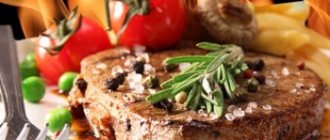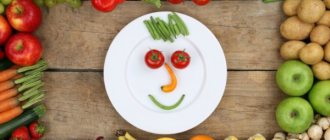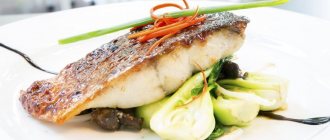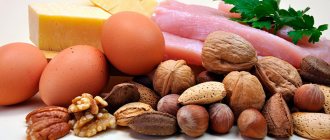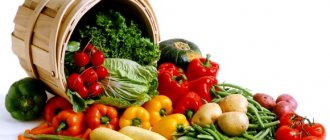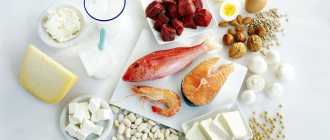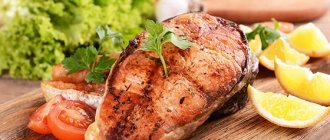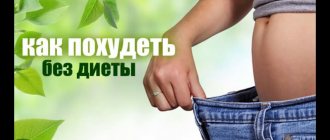Share:
Losing weight quickly, easily and without feeling hungry, or building muscle without gaining excess weight is the dream of millions.
However, not everyone is aware that there is a great way to make your dream come true and it’s called a protein diet. It is successfully used by girls to lose weight, and by athletes to gain muscle mass.
We will talk in detail about its rules, diet and acceptable foods in this article.
What is a protein diet
The protein diet, as the name implies, is based on the consumption of protein foods, while carbohydrate-containing foods are kept to a minimum. Result: minus 5-10 kilograms in just ten days. By the way, that’s exactly how long it lasts.
The opinions of doctors and nutritionists about it are divided. Some consider it almost a panacea for all ills, others point out its shortcomings, and still others confuse it with the Dukan diet (which is not entirely correct, although the latter is also based on the consumption of protein foods).
To understand all this, let's consider all the advantages and disadvantages of this method of nutrition.
Advantages
8 main advantages of the diet:
- A protein diet for weight loss is an ideal way to lose weight without suffering from constant hunger. This is possible due to the high protein content in the foods consumed.
- Ideal for athletes, as it allows you to maintain and build muscle relief while getting rid of excess subcutaneous fat.
- There is no “sagging skin” effect.
- At the same time, it cleanses the body.
- Improves metabolic processes and speeds up metabolism.
- With the right approach and following all the rules, it gives a lasting result.
- Allows you to use a tasty and rich menu.
- Lasts only ten days.
Flaws
The disadvantages of a protein diet are much less than the advantages:
- Most of the possible negative consequences are associated with non-compliance with the rules and diet (see below).
- Cannot be used for a number of diseases.
- Calcium is washed out of the body.
- Lethargy and weakness may appear in the initial stages.
Contraindications
The protein diet has a number of contraindications:
- kidney diseases;
- diabetes;
- period of lactation and pregnancy;
- for disorders and disturbances in the gastrointestinal tract;
- diseases of the cardiovascular system.
Some tips to improve the effectiveness of the “sports diet”
swimming, fitness, jumping rope, cycling - and these are not all options for active leisure. Don't wait for results lying on the couch at home or sitting in an office chair, you will never get it. Develop your muscles, activate your energy, constantly work on yourself and your problem.
No diet is conceivable without food restrictions, including protein. Many people mistakenly believe that after drinking a tasty drink, you don’t have to limit yourself in food intake, and drinking a protein drink in itself is already the key to getting rid of hated deposits. I hasten to disappoint the readers of this article.
A protein shake cannot cope with the excessive intake of excess calories. Its task is to enrich the body with concentrated protein, the absorption of which requires the expenditure of more energy (which is the principle of losing weight, as we have already said). The food entering the body should not interfere with this process, violating the whole point of taking protein shakes.
Read more: Protein shake for weight loss at home for women and men: recipes on how to make a protein drink yourself
The following should be completely prohibited:
- Fatty meat, sausage products;
- Fatty fish varieties;
- All types of smoked products;
- Fried and overly salted;
- Canned foods;
- Fast food, fast food;
- Culinary products and sweets;
- Sweet carbonated drinks, alcoholic beverages.
Preference should be given to:
- Dietary varieties of meat and fish;
- Eating fruits and vegetables (in unlimited quantities);
- Cereal porridge with skim milk;
- Whole grains and nuts.
How often do we think about what kind of water enters our body? Probably some will answer that they very rarely think about this question, and there will be those who will say that they have never thought about it... But in vain! Many people probably know that the human body is 70% water. How can you then not think about this question? In our interests, it is important not to neglect its quality.
Particular attention should be paid to the water consumed also because waste, toxins and decay products are removed from the body along with it. As many experts say, you need to drink at least two liters of water throughout the day, ideally in small portions between meals. After training, replenish your body's water reserves, because...
Please pay attention to one more important point: preference should be given to non-carbonated mineral water; if possible, for better digestibility, its temperature should be at room temperature. You can use a variety of water filters to purify it from various contaminants. This water will taste much more pleasant and softer. If you drink exclusively boiled water, then under no circumstances should you allow repeated boiling or mixing of raw and boiled water.
Such water is heavy due to changes in the composition of its chemical formula, and consumption is not only very harmful to health, it is often even detrimental to the body as a whole.
In conclusion, I would like to say a few suggestions to people struggling with excess weight: Never stop halfway. Even if something doesn’t work out, even if it’s hard and you have thoughts that all your efforts are in vain. Always go towards your intended goal, breaking all barriers. Review your diet, start actively playing sports, if this or that diet does not help, seek answers to your questions from doctors, and most importantly, do not under any circumstances lose faith in yourself and your strength. After all, this is the only way to achieve such a long-awaited dream as a slim and beautiful figure.
Basic rules and diet
A protein diet is absolutely harmless for healthy people if its duration does not exceed 10 days. Nutritionists do not recommend repeating the course earlier than after 2 months.
By following these rules, you will not only lose extra pounds, but also build muscle mass provided you exercise regularly:
- Drink water. A protein diet stimulates kidney function, which increases the risk of dehydration. Drink at least two liters of water throughout the day. Start your morning with a glass of water and be sure to drink the same amount half an hour before each meal. This will help the functioning of the gastrointestinal tract.
- Cellulose. High protein and low carbohydrate content reduces the volume of food, which has a bad effect on the functioning of the entire gastrointestinal system. To avoid the consequences, if possible, take fiber, bran in the morning or several times during the day before meals.
- Vitamins and minerals. Like any other diet, a protein diet cannot provide the body with all the necessary substances. Take vitamin and mineral complexes, primarily calcium supplements, as it is intensively washed out of the body.
- Diet. It is important that meals are fractional. Food should enter the body on average every three hours. The last appointment is no later than eight in the evening.
- The ratio of proteins and carbohydrates. Be careful to ensure that the protein to carbohydrate ratio does not fall below 2/1, respectively.
- Cooking method. You are allowed to treat yourself to fried fish or meat, but to achieve the effect, most foods must be prepared with minimal use of fat. Ideal option: steaming or baking.
- Workout. If you are not going to exercise, the diet will be ineffective. It is advisable to establish a training regimen and only then change your diet. A protein diet for gaining muscle mass involves strength training at least three times a week and the use of sports nutrition - protein shakes and bars.
https://youtu.be/r07Al3l75zA
Basic principles of correct use
To get the best results for weight loss, it is important not only to know how to make a protein shake, but also how and when to consume it.
As mentioned above, the most important point in the “sports diet” is maintaining proper nutrition. Protein shakes act as an addition to a healthy diet, but in no case as a replacement for it.
See the same topic: The benefits of pears in a weight loss diet
The basic principles of correct use include:
- The volume of drink consumed per use should not exceed 300 g;
- Do not exceed the daily norm for total body weight (it is 2 grams per 1 kg of body);
- Take no more than three cocktails a day;
- The total duration of taking protein shakes should not exceed 2 months. After this period, you should take a long break to avoid addiction.
What can and cannot be eaten?
A huge advantage of a protein diet is that you don’t have to “sit” on the same type and bland dishes. However, it is worth limiting the consumption of products that contain artificial food colors, flavorings, and preservatives.
Food should be natural and healthy, and heat treatment should be minimal.
To make it easier for you to navigate, we have compiled lists of products, roughly dividing them into groups.
Authorized Products
The foods listed in the table below can be eaten in almost any quantity (first column) or in limited quantities (second column). Of course, you should not exceed your daily calorie requirement:
| Authorized Products | Allowed in limited quantities |
| Vegetables: lettuce, Chinese cabbage, cucumbers, celery, lettuce, radish, radish, greens, cauliflower, broccoli, spinach, bell pepper, unsweetened tomatoes, spices | Vegetables: zucchini, eggplant, sweet tomatoes, white cabbage |
| Meat: lean pork, veal, beef, lamb, lamb, poultry (without skin), so-called “soy” meat | Meat: sausages, sausages, sausages |
| Fruits: avocados, lemons, any citrus fruits, sour apples, cranberries | Fruits: nuts, sweet apples, sweet berries |
| Tofu cheese, low-fat fermented milk products | Cheese |
| Fish of all types, including oily fish, seafood | Whole grain cereals |
| Fresh, dried and frozen mushrooms | Legumes |
| Egg white | Freshly squeezed fruit juices |
| Olive or flaxseed oil | |
| Drinks: freshly squeezed vegetable juices, still water, any teas and coffee, but without sugar |
It is permissible to eat products from the second column of the table during the diet, but their quantity should be limited. It is advisable to consume them no more than once a day and in small quantities.
Prohibited Products
Remove the following foods from your diet, preferably completely:
- sugar;
- honey;
- chewing gum;
- confectionery;
- flour products;
- porridge;
- pasta;
- canning and pickles;
- sweet fruits;
- sweet berries;
- vegetables: potatoes, carrots, beets, corn, olives and black olives
- soft and processed cheeses;
- crab sticks;
- any sweet and carbonated drinks;
- packaged juices;
- alcohol.
Diet based on protein shakes and bars
The protein diet is primarily designed for athletes. But athletes often need not so much losing weight as cutting and gaining muscle tissue. When using a protein diet to gain weight, regular physical activity is required.
And this implies a transition to a different level of nutrition. You will need additional sources of protein, namely protein shakes and/or protein bars.
Let's talk about these products in detail.
Protein shakes
Protein shakes are rich in protein and other beneficial substances, depending on the brand and composition. If you have chosen this method of losing weight, be sure to take vitamin and mineral complexes and drink fiber so that the protein shake diet does not disrupt metabolic processes and the functioning of the gastrointestinal tract.
The cocktails themselves can be divided into several groups and taken depending on the time of day or situation:
- Cocktails with calcium caseinate. Such cocktails are good because they “kill” the feeling of hunger for a long time, while simultaneously preventing muscle catabolism. Their use is simply necessary on training days.
- High protein shakes (up to 10 grams of protein per serving). Such cocktails are rich not only in protein, but also in carbohydrates, and can replace one full meal.
- Cocktails with carnitine and/or chromium picolinate. These cocktails are simply irreplaceable assistants for those who prefer frequent and high-intensity training. They replace meals, but do not contribute to the feeling of fullness.
- Homemade cocktails. They are good for their composition, but quickly deteriorate, so they are only suitable for home use. They are able to completely suppress the feeling of hunger and have a more pleasant taste. With them, the diet is mentally easier to endure. In addition, the fermented milk products included in their composition help to avoid problems with the gastrointestinal tract.
Protein bars
Many people like protein bars. They are compact and have a pleasant taste, quickly fill you up and can replace up to two full meals.
However, there are some disadvantages. While providing a large amount of calories and protein per meal, they are small in volume. For this reason, a diet based on protein bars is fraught with disturbances in the functioning of the gastrointestinal tract. In addition, store-bought versions often contain additives, flavor enhancers and excess sugar.
Such a diet is psychologically difficult and potentially dangerous. An alternative is to either combine the bars with other foods or prepare them yourself.
You can find some of the simplest recipes in dish recipes.
Methods to combat excess weight
If we talk about methods of dealing with extra pounds, then not a single scientific paper can be written on this issue.
However, the situation will not change until everyone who is faced with this problem begins to move from theory to practice and try in some way to change their life for the better. Among the many methods in the fight against excess weight, protein shakes are gaining increasing popularity. And if previously protein shakes were used, as it should be, exclusively by athletes to maintain strength in the body during competitions, building muscle mass, increasing endurance, and normalizing metabolic processes, then these days taking protein shakes is gaining more and more popularity among those who want to lose excess weight.
https://youtu.be/DqT0dGDv-_Q
In our country, protein powder is considered a dietary supplement. It contains natural protein, vitamins, and minerals. A high-quality concentrate should not contain artificial preservatives, colorings, or flavor enhancers. The presence of flavoring additives is acceptable.
Many people who are often on diets are well aware that a variety of protein diets have the greatest effectiveness and long-lasting results. There are several explanations for this:
- When digesting protein foods, significantly more energy is consumed (which means the body’s energy reserves in the form of excess fat are activated);
- Protein foods prevent the absorption of excess fat;
- With an integrated approach (regular physical activity, avoiding junk food), it helps preserve muscle mass;
- Compared to other types of diets, results appear very quickly.
Protein diets also include the so-called “sports diet” based on protein shakes. It should be understood that while on such a diet, a person does not eat exclusively powder from a jar, but consumes protein shakes between meals. Let's take a closer look at the benefits of using protein concentrate for weight loss.
Diet menu for 10 days
The protein diet menu options for men and women are not particularly different. In fact, the whole difference lies in the amount of food consumed per day.
Calculate the quantity using the formulas:
- For men, the ratio of proteins and carbohydrates per kilogram of weight is 2.5 grams and 1 – 3 grams, respectively.
- For women, the ratio of proteins and carbohydrates per kilogram of weight is 2 grams and 0.5 - 1.5 grams, respectively.
You just need to calculate the amount of necessary substances based on your body weight and correlate them with our protein diet menu table for 10 days.
| breakfast | lunch | dinner | afternoon tea | dinner | |
| 1st day | protein oatmeal (see recipe below) | steamed turkey fillet cutlet + stewed vegetables with herbs | baked salmon + lemon slice + green salad | boiled chicken breast + cauliflower in egg (see recipe below) | beef broth + soft-boiled egg + mushrooms stewed with herbs |
| 2nd day | veal + blanched spinach + cucumber | watercress cream soup (see recipe below) | baked pork, pre-marinated in yogurt with spices + stewed vegetables | asparagus stewed in sour cream with garlic and herbs + a glass of low-fat kefir | boiled white fish fillet with lemon juice and spices + cabbage salad with herbs and olive oil |
| 3rd day | chicken cutlet with tofu cheese, baked in the oven + a glass of freshly squeezed vegetable juice + green salad | any grilled fish + salad of tomatoes, cucumbers and cabbage, dressed with olive oil | braised pork with celery (see recipe below) | homemade protein bar | low-fat cottage cheese + sour cream + herbs |
| 4th day | two tablespoons of boiled brown rice + light salad | creamy mushroom soup with spinach (see recipe below) | beef with artichokes (see recipe below) | salmon steak + light salad dressed with lemon juice and olive oil | seafood cocktail |
| 5th day | two protein brownies (see recipe below) + fresh citrus juice | salad of tomatoes, celery, avocado + boiled beans, dressed with olive oil and lemon juice | grilled pork + stewed zucchini with herbs, yogurt and garlic | veal + stewed broccoli and cauliflower | chicken broth + light salad |
| 6th day | omelette of whites and one yolk + green salad | low-fat cottage cheese + nuts and berries | stewed cabbage + baked turkey fillet | protein shake with skim milk | boiled beef + avocado salad with celery |
| 7th day | protein oatmeal + glass of fresh vegetable juice | grilled vegetables + boiled white fish | any bird baked in foil with vegetables | baked eggplants _ low-fat cottage cheese with herbs and garlic, seasoned with low-fat yogurt | cauliflower in egg + meat broth |
| 8th day | two soft-boiled eggs + steamed turkey cutlet + greens | salad of boiled lamb meat with tomatoes, tofu cheese and herbs, dressed with olive oil and lemon juice | fried chicken fillet without oil + zucchini and lettuce | salmon baked on an onion bed + green salad | low-fat cottage cheese with herbs and low-fat yogurt |
| 9th day | two tablespoons of boiled brown rice + asparagus salad with herbs | protein ice cream (see recipe below) | lean steak + cucumber salad with celery | protein shake with skim milk | mussel and tomato salad dressed with olive oil and lemon juice |
| 10th day | salad of eggs, herbs and low-fat yogurt + unsweetened tea or coffee | pumpkin soup | grilled veal + Chinese cabbage salad with tomatoes, dressed with olive oil | stewed pork with celery | Greek salad without olives |
A logical question arises: are there rules for drinking protein shakes?
1. Meals should be divided: during the day there should be 5-6 meals a day in small portions and at approximately the same interval. Nutritionists recommend eating food even if you do not feel a strong feeling of hunger.
2. You need to drink about 2–3 liters of clean water per day. However, you should know that you should not drink water during meals; this should be done an hour before or after a meal.
3. After 20:00 it is strictly forbidden to eat; you should even refuse fruit.
4. When preparing food while losing weight, you are allowed to use only olive oil.
5. Your daily diet should contain no more than 20 grams of carbohydrates.
6. While losing weight, it is recommended to take multivitamin complexes, since you will have to give up many foods.
A protein diet for weight loss involves eating large amounts of protein and limiting carbohydrates and sugar. This nutritional system promotes active fat burning. Losing weight on proteins has an important advantage: after losing weight, the skin does not sag and muscles do not weaken.
Products for a protein diet
https://youtu.be/3pdzbDYe3Js
The protein diet is quite strict, as it involves eliminating many foods from the diet. For a change in your usual diet to be beneficial and for you to actually lose weight, you should give up foods such as:
- any alcoholic drinks;
- fruits and fruit juices;
- carbonated drinks;
- seafood - squid, shrimp, crabs, seaweed;
- legumes and cereals;
- pickled vegetables;
- flour products;
- sweets, confectionery;
- milk and dairy products.
In limited quantities, foods such as boiled sausage, sausages, tomatoes, zucchini and eggplants are allowed.
The list of foods allowed for a protein diet by nutritionists includes meat, lard, fish, eggs, mushrooms, olive oil, lemon, salt, pepper, and garlic. You can drink water, unsweetened tea and coffee in any quantity.
The protein diet menu is designed in such a way that almost every meal should contain protein - protein. The diet should consist of a variety of meat products - chicken, turkey, lamb and lean beef. Smoked meats, sausages and pork should be completely excluded from the menu while losing weight due to the high fat content of these products.
- Breakfast - cottage cheese casserole or omelette with vegetables.
- Lunches - okroshka, ukha or vegetable soup; these first courses are prepared without adding potatoes.
- Dinners – trout with vegetables, baked in the oven, fish cutlets, grilled chicken, turkey fillet, squid salad.
Nutritionists recommend sticking to this diet plan for at least 2 weeks, especially if you have a serious problem with excess weight. During this period, you can lose 5–7 kg. You can repeat the diet every few years.
Nutritionists have developed a protein diet for women, but the process of losing weight in the male and female bodies occurs in exactly the same way, so the only difference is in the serving sizes. To lose weight on proteins, you need to learn not only to count calories, but also to weigh food.
Per 1 kg of weight, the diet should contain 0.5–1 g of carbohydrates and 2 g of proteins. For example, with a weight of 60 kg, a protein diet menu for women may approximately look like this:
- breakfast – two boiled eggs, cabbage salad, 1 teaspoon of bran with water;
- snack – 100 g of yogurt or cottage cheese;
- lunch – lean red meat with stewed vegetables;
- snack - protein shake or mixture of 100 g cottage cheese, 1 tsp. cinnamon and 200 ml kefir;
- dinner - fish or meat, cucumbers or celery.
A protein diet for weight loss for women can last two weeks.
The protein diet, designed for 10 days, is based on a diet that is made up of permitted foods. The protein diet menu for 10 days is presented with several options that can be repeated in any order.
Option 1
- Breakfast – chicken cutlet with stewed vegetables, tea.
- Lunch – baked fish with cabbage salad, tea.
- Afternoon snack – chicken fillet, cauliflower in egg batter.
- Dinner – beef broth, boiled egg, mushrooms and herbs.
Option 2
- Breakfast – baked chicken fillet, cucumber and celery salad, a cup of coffee.
- Lunch – fish or fish cutlet, salad of radish, cucumber and herbs, tea.
- Dinner – lamb baked with herbs and sweet peppers, tea.
Option 3
- Breakfast - boiled egg, lettuce.
- Lunch – meat stewed with eggplant, pepper in tomato, coffee.
- Dinner – chicken broth, salad with cucumber and celery.
If you are worried about a strong feeling of hunger, light snacks are allowed between main meals. As a snack, you can eat a salad, drink tea or coffee.
A protein diet without long-term fasting will allow you to get your body into ideal shape, lose excess weight and acquire an attractive muscle profile. It should be remembered that the technique is debilitating for the body, so it may cause some side effects.
The protein diet is contraindicated for people with impaired functioning of the liver, kidneys, or digestive system; it cannot be followed if you have gout. Nutritionists prohibit losing weight by eating protein foods in older people and overweight people, since protein increases blood clotting, increasing the risk of blood clots.
There will be only one answer - definitely yes. Without orderly intake, non-compliance with the time frame and rules of use during the day, there is a high risk of poor results in the fight against excess weight. Therefore, you should remember:
- You should always drink a protein shake on an empty stomach;
- If you plan to eat before playing sports, then no earlier than two hours before it;
- If drinking a cocktail is required after physical activity, this is done an hour after.
Read more: Pea protein benefits and harms for athletes rating of the best supplements
The importance of the protein component in the diet lies in the supply of amino acids to the body, some of them are essential and their intake is mandatory. Eight amino acids must be supplied with food, and they are contained in animal protein (milk, meat, fish, eggs). Plant proteins do not contain all essential amino acids.
Protein is important not only for maintaining health and normal functioning of the body, but also, if necessary, for weight loss. The need to consume protein when losing weight is dictated by the following:
- Fat burning is impossible without the presence of protein. It has been proven that a protein diet for weight loss works faster and more effectively than a high-carbohydrate diet, provided the calorie content is the same.
- Allows you to lead an active lifestyle and play sports, without feeling constant hunger, as with low-calorie nutrition programs, which often end in failure.
- Protein deficiency leads to a decrease in immune defense, disruption of the synthesis of dermal proteins (skin loses elasticity, becomes flabby and wrinkled). The synthesis of hormones and the menstrual cycle are disrupted.
- When there is a lack of protein in food, contractile proteins begin to break down in the body and muscle mass is lost. Muscle proteins are used for the synthesis of enzymes, hemoglobin and biogenic regulators. Muscles lose amino acids, which are also used for energy needs.
The essence of the protein diet is to consume predominantly protein foods of animal origin and sharply limit fats and carbohydrates. By and large, any diet in which the protein norm is too high relative to fats and carbohydrates can be considered a protein diet.
Simple carbohydrates, abundant in everyday life, significantly increase blood glucose levels. The pancreas responds to this by releasing insulin, and glucose levels immediately decrease. This in turn causes a feeling of hunger and the person is again “charged” with food.
Such jumps in insulin levels do not occur when eating protein foods. Reducing insulin secretion also prevents the process of fat deposition. Under the influence of insulin, the synthesis of fats from carbohydrates is enhanced and fatty acids contained in the blood accumulate in the cells of adipose tissue.
Protein foods saturate well, in addition, excess protein is not converted into fat, since the body more easily creates reserves from fats and carbohydrates. By limiting the proportion of carbohydrates, we are deprived of “fast” nutrition and force the body to switch to using fats. Further, the body spends more energy on the absorption of protein, so there is additional energy consumption.
- Compliance with drinking regime. Every day you need to drink about 2 liters of water. Each time before meals you should drink one glass of water and do not drink for an hour after eating. Many nutritionists recommend just this technique.
- Fractional meals if the goal is weight loss. The number of meals can be 4-5 times. This regime prevents you from feeling hungry and helps speed up your metabolism.
- Maintain the meat-vegetables (carbohydrates) ratio - it should be 2:1. In this case, carbohydrates are represented by green and non-starchy vegetables.
- The amount of carbohydrates obtained from vegetables is 0.5 per kg of weight (60 kg weight gain - 30 g).
- Fats cannot be completely eliminated. The menu must include olive, sunflower or flaxseed oil.
- Drinking regimen: 1.5-2 liters of water consumed between meals. Water suppresses appetite and is essential for normal metabolism.
- Eating is prohibited after 20:00.
- Due to the unbalanced diet and the large protein load on the body, you can follow the diet for no more than 10 days, and while following it you must take vitamin complexes.
The minimum protein requirement for a healthy person is 0.8-1.5 g per kg of weight. It depends on the type of activity, physical activity, and, ultimately, on climatic conditions. For some categories (athletes, pregnant women), the norm increases to 2 g. For women who want to lose weight, subject to strength training, it is recommended to consume 1.7 g of protein, and some authors suggest more - up to 2 g.
